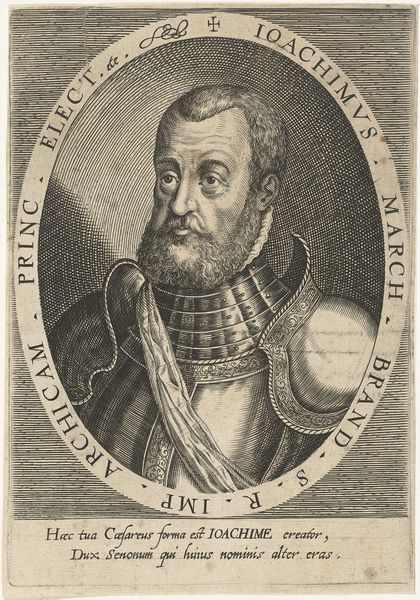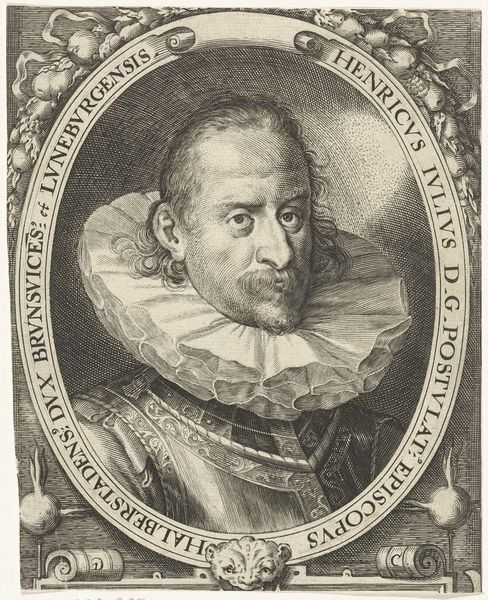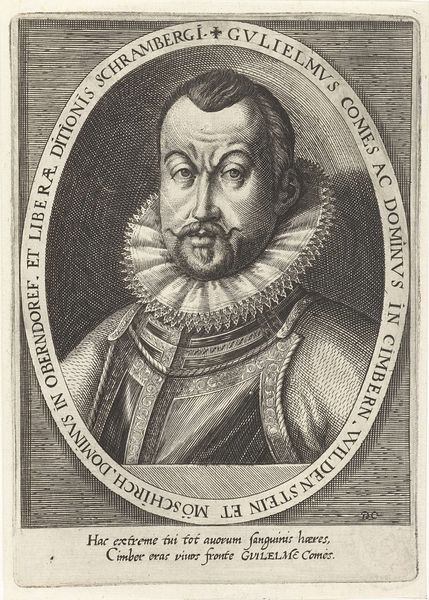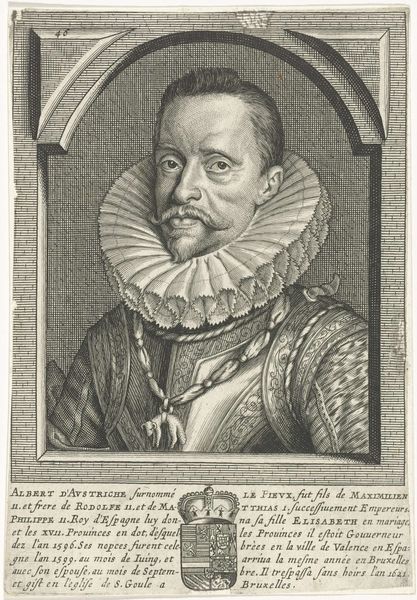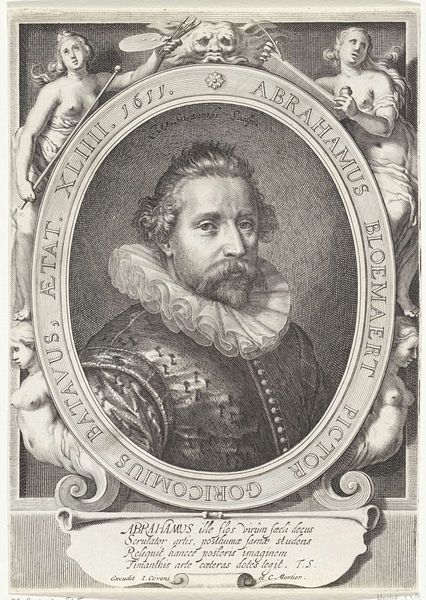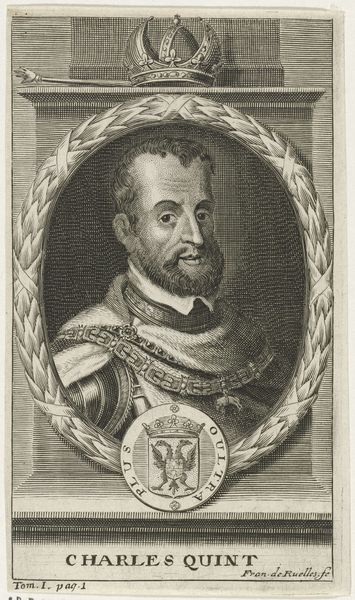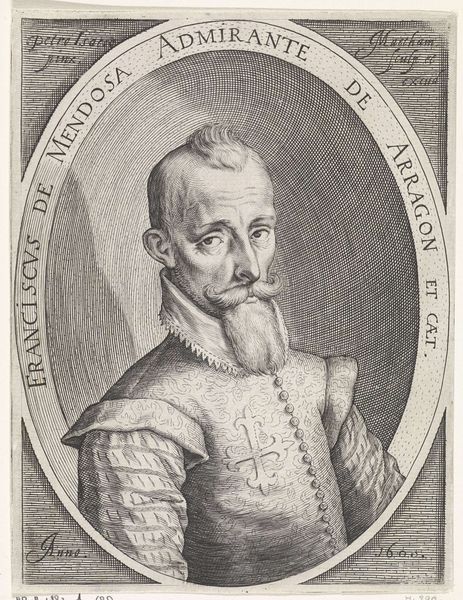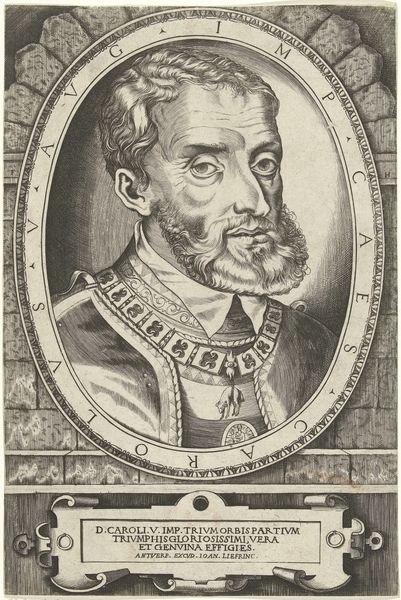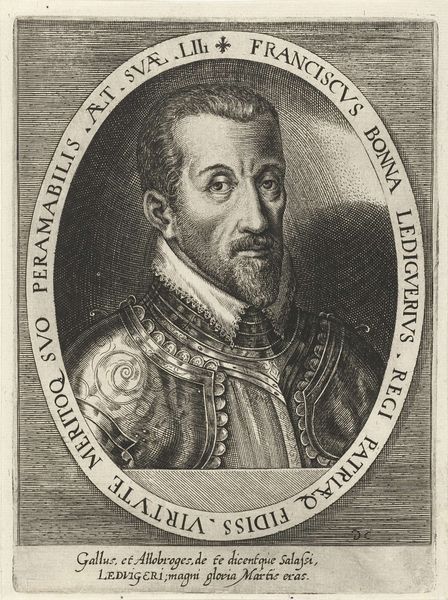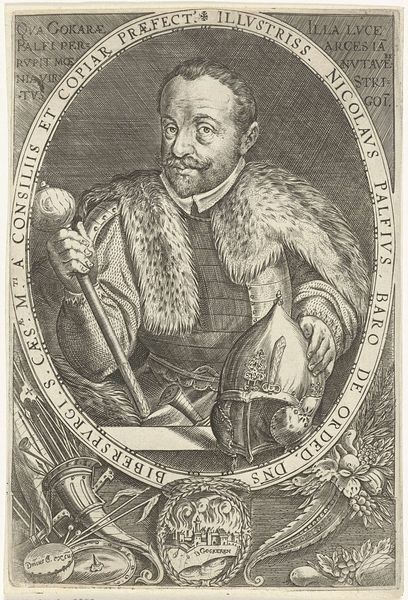
print, engraving
#
portrait
# print
#
mannerism
#
figuration
#
northern-renaissance
#
engraving
Dimensions: height 177 mm, width 125 mm
Copyright: Rijks Museum: Open Domain
Editor: We're looking at "Portrait of Johan Willem, Duke of Cleves," an engraving done between 1600 and 1604 by Dominicus Custos. The level of detail is impressive, particularly in the rendering of the ruff and armor. What strikes you most about its composition? Curator: Indeed, the technical execution is noteworthy. Observe how the artist employs the oval frame not merely as a boundary, but as an integral component that emphasizes the subject’s composure and simultaneously draws the eye inwards. The engraving relies on hatching and cross-hatching. Can you see how the varying density of the lines affects the modeling and distribution of light and shadow? Editor: Yes, it’s most evident in the face, creating depth and highlighting certain features. How would you interpret the portrait's overall effect, beyond just the technique? Curator: Note the balanced arrangement of textual elements around the portrait. Consider the inscription—does its presence and placement affect your interpretation of the duke’s representation? Think about how such elements enhance the subject's status and legacy through textual framing. The image’s effect derives precisely from such interplay of text and image. Editor: I see. It all comes together to frame him—both literally and figuratively—as a figure of authority. Curator: Precisely. Reflect on how the structural decisions serve to elevate the subject. Every formal choice contributes to a calculated and idealized presentation. Editor: This close analysis really changed how I see it now! Curator: Good. Attention to form refines understanding.
Comments
No comments
Be the first to comment and join the conversation on the ultimate creative platform.

